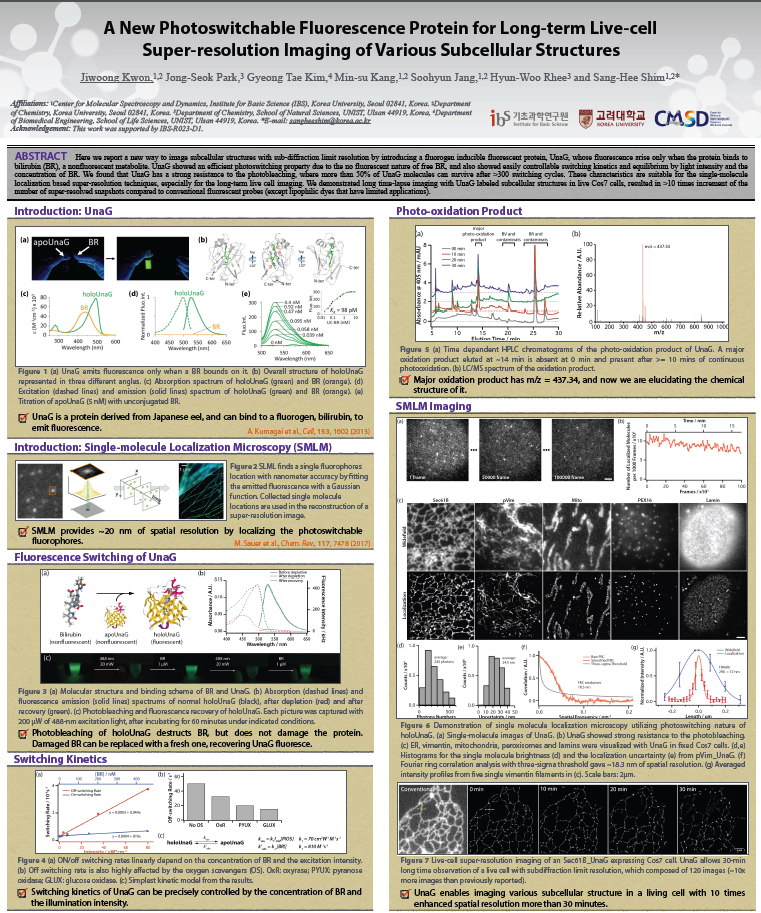mainmenu
A New Photoswitchable Fluorescence Protein for Long-term Live-cell Super-resolution Imaging of Various Subcellular Structures
2017 KPS Fall Meeting

Here we report a new way to image subcellular structures with sub-diffraction limit resolution by introducing a fluorogen inducible fluorescent protein, UnaG, whose fluorescence arise only when the protein binds to bilirubin (BR), a nonfluorescent metabolite. UnaG showed an efficient photoswitching property due to the no fluorescent nature of free BR, and also showed easily controllable switching kinetics and equilibrium by light intensity and the concentration of BR. We found that UnaG has a strong resistance to the photobleaching, where more than 50 % of UnaG moelcules can survive after >300 switching cycles. These characteristics are suitable for the single-molecule localization based super-resolution techniques, especially for the long-term live-cell imaging. We demonstrated long time-lapse imaging with UnaG labeled subcellular structures in live Cos7 cells, resulted in >10 times increment of the number of super-resolved snapshots compared to conventional fluorescent probes (except lipophilic dyes that have limited applications).


